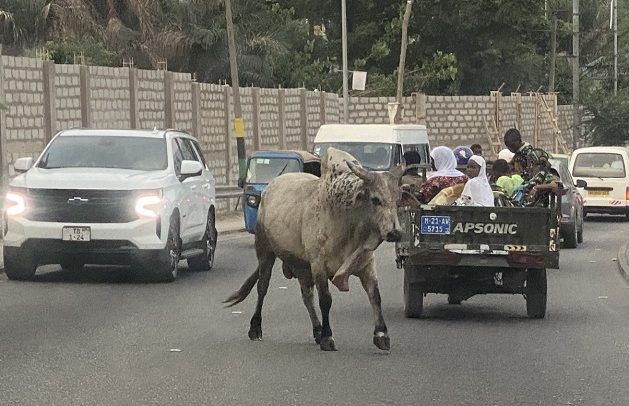
The non-enforcement of bye-laws on stray animals in the Kassena-Nankana West District of the Upper East Region has been identified as one of the major threats to vegetable production in the area.
Majority of the indigenes in the area particularly the youth and women depend on the production of agricultural vegetables as their primary source of livelihood.
For instance 75 per cent of the population in the Anaanore community, which is one of the communities in the district, depends on the production of agricultural vegetables such as tomato, pepper, onions among others for their livelihoods.
This was made known during a dissemination of research findings here on Tuesday conducted by Anaanore Dry Season Farmers Association and sponsored by the Business Sector Advocacy Challenge (BUSAC) Fund and its development partners DANIDA, European Union and USAID.
The research, which was conducted in December 2017 was on "Advocacy for the Enactment of Stray Animal Bye-Laws and its Implementation."
It was structured to identify areas of advocacy, for the enactment and enforcement of bye-laws on stray animals in the Anaanore community of the Kasena-Nankana West district
The research also revealed that the situation was forcing a lot of the vegetable farmers who are youth and the active working population to abandon their farms and migrate from the area to the southern part of the country to seek for greener pastures.
"This continues to dwindle and sink the interest of most especially the youth in the area; leading to their migration to the bigger towns in search for non-existing jobs," one female respondents lamented her ordeal.
The research discovered that the vegetable farmers were deeply worried because stray animals continue to destroy their vegetable farms on daily basis, making their investments go waste, and putting the survival of farming families at risk.
The research also indicated that the situation had led to intense manifestation of hostilities and social frictions among crops and animal farmers in Anaanore community and asserted that they could have made higher profits if the stray animals did not destroy their crops.
It was also discovered through the research that although the assembly had enacted by-laws on stray animals during only raining seasons and enjoins a maximum amount of GH¢ 25.00 as penalty for breaking the bye-law, it felt that the amount was far below the cost of transporting the animal to the district capital which is about 75km away from Ananoore community for the officials at the district assembly to determine the necessary resolution and adjudication.
The Secretary to association, Mr. Maxwell Akunyire stressed that it was expedient on the part of duty bearers to have an immense knowledge about the plight of vegetable farmers and indicated that the study would be used as a report to represent the voices of the vegetable farmers.
"When this is done, it will resolve the dwindling interest in vegetable production and further reduce the migration of the active working populations from the Anaanore community to the southern part of the country to seek greener pastures," he added.
The Monitor of the BUSAC Fund, Mr. Vincent Subbey, commended the group for their advocacy strategies and pointed out that the phenomenon of stray animals causing destruction of farmlands was not only limited to the Kassena-Nankana West, but the entire regions of Northern Ghana.
Read Full Story


















Facebook
Twitter
Pinterest
Instagram
Google+
YouTube
LinkedIn
RSS